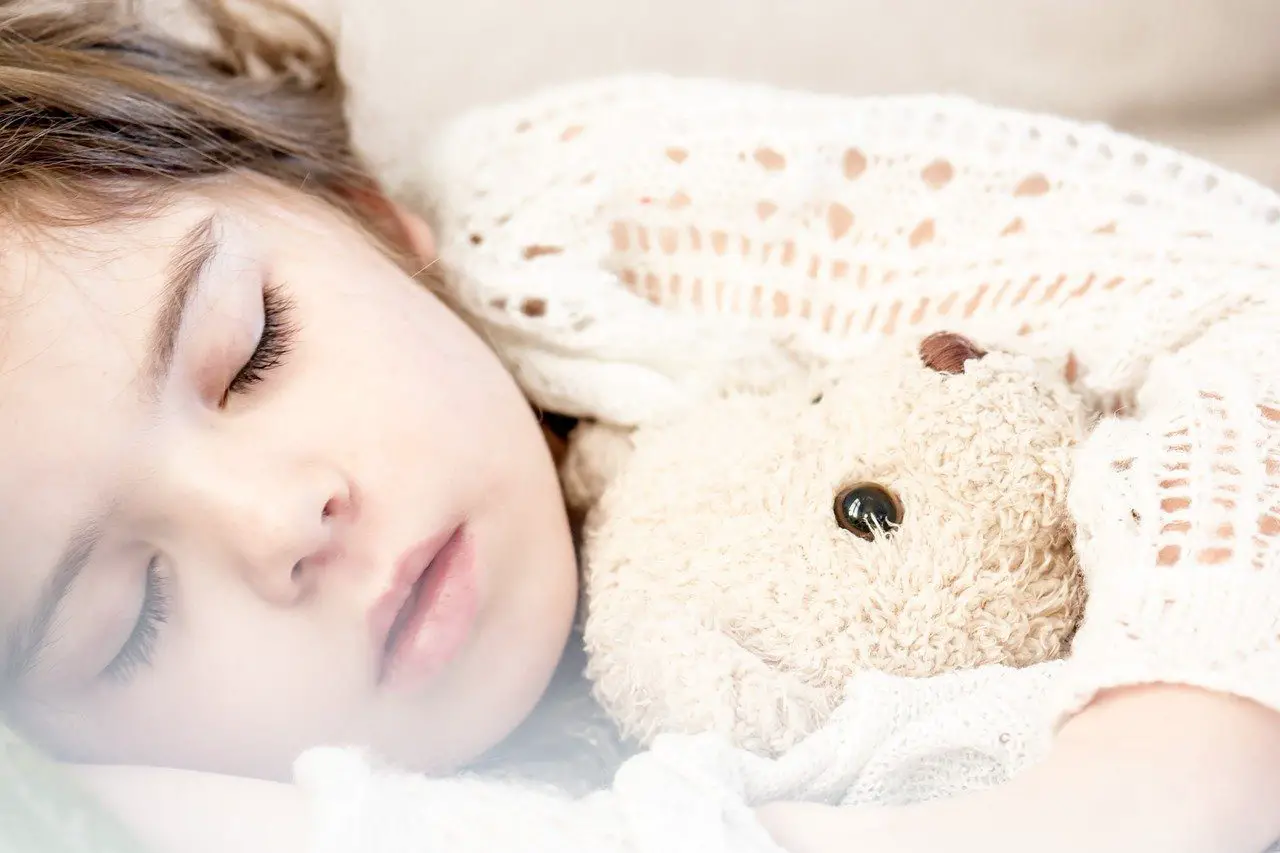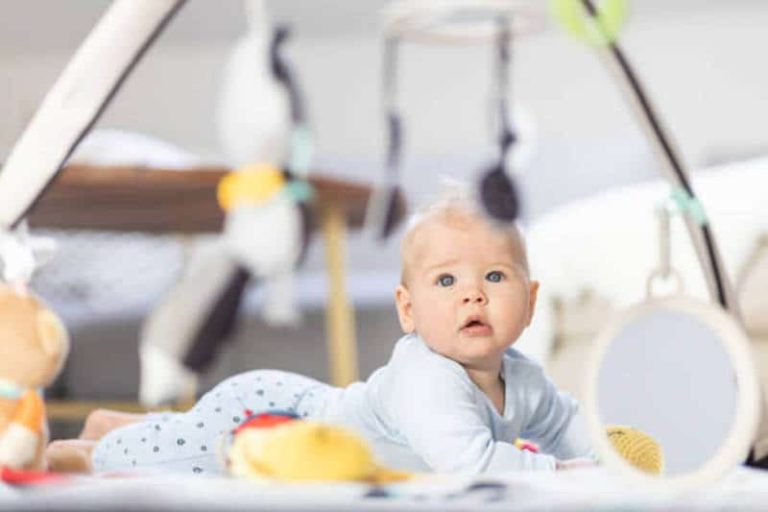How To Teach A Baby To Self Soothe
Does your baby wake up in the middle of the night? Imagine they could just turn over and fall back to sleep without you doing anything.
Sounds too good to be true, right?
Note: This post may contain affiliate links, which means if you buy from my link I might make a small commission. This does not affect the price you pay. See the full affiliate disclosure here.
But it’s actually completely possible! All you have to do is learn how to teach a baby to self soothe.
So what is self-soothing for babies?
As the name suggests, self-soothing means that the baby or toddler learns how to put themselves back to sleep when they wake up in the middle of the night. In essence, they wake up, make some brief noises, move around a bit, and then fall back asleep before getting fully awake and without your intervention.
Some of the most common ways the babies soothe themselves include:
- Sucking their thumb or another finger
- Sucking a pacifier
- Hugging or sucking a favourite blanket or a toy
- Sucking a bottle
- Rubbing their eyes
- Holding their hands together
- Playing with a lock of hair
- Turning around to find a more comfortable position
Why is self-soothing important?
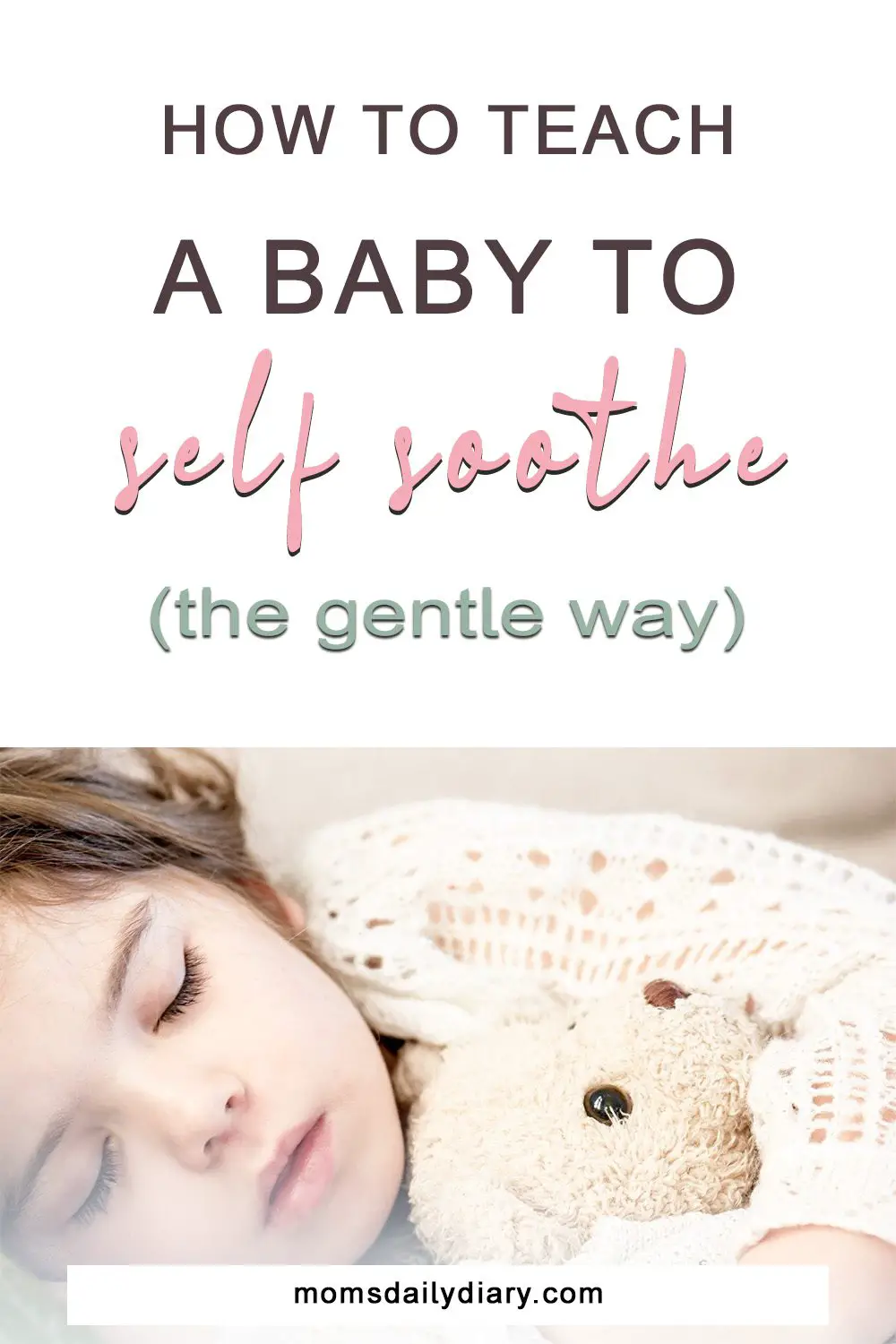
All babies wake up multiple times during the night between the different sleep cycles. But how they respond to these night wakings may determine the quality of the baby’s sleep.
By self-soothing, the baby will be able to go back to sleep while still drowsy instead of going fully awake after they cry their heart out, waiting for their parents to respond. This reduces the stress for both your baby and your whole family and allows you to get a much-deserved rest so you can welcome the next day.
While rocking your baby to sleep every night may seem comforting to them, it could create negative sleep associations. In other words, they may have a hard time falling asleep without your help even when they’re far beyond the baby phase.
In addition, by learning to self soothe themselves, your baby is setting the grounds for good sleep habits when they grow older.
When should you teach your baby to self soothe?
If you have a newborn that wakes 5 times a night you’re probably eager to start applying these sleep training techniques right away. However, this is not such a good idea. Here are a few reasons why:
- Newborns cannot control their movements enough to be able to properly soothe themselves.
- Their brain development still doesn’t allow them to apply any control over their own emotions.
- Leaving a toy or a loose blanket next to a newborn baby increases the risk of sudden infant death syndrome (SIDS).
- They still need their night feeds and require your unconditional love and support when they cry out for you.
At the right age, however, they will be more open to learning to sleep on their own.
The ideal time to start teaching them this new skill is after the 4th month.
Still, don’t expect miracles overnight. Give them enough time to ease into the new sleep routine. Be consistent and the results will surely come.
Is sleep training safe for your baby?
Over the last decade or so, the topic of whether a baby should be taught to comfort themselves has been controversial, to say the least.
Some say that self-soothing is essential for the well-being and proper development of the baby.
Others believe that a baby this young cannot learn to control their emotions and thus it is not really self-soothing, rather adapting to the new routine.
I’ve also heard people say that self-soothing in babies is beneficial for the parents only, as they are able to get more sleep.
As for me, I firmly believe that a well-rested parent is a better parent compared to an exhausted and overstrained one. Just like a baby that slept through the night, is more likely to spend their day playing and smiling.
However, I only support sleep training when it’s done in a gentle, non-invasive way, unlike the notorious “cry it out” or “extinction” method.
So now that you know the why and when, let’s see how to teach a baby to self soothe.
The “Cry It Out” method
In the past, it was believed that you can teach a baby or a young child to fall asleep on their own by letting them cry themselves to sleep.
I strongly believe that the only thing this method can teach a child is that they can’t trust anyone to meet their emotional needs and that this could create a trauma that may last a lifetime.
So let me be clear. I don’t support this method, and I don’t recommend it. There are a lot more gentle ways on how to teach a baby to self soothe. If “cry-it-out” can be called “self-soothing” at all.
How to teach a baby to self soothe?
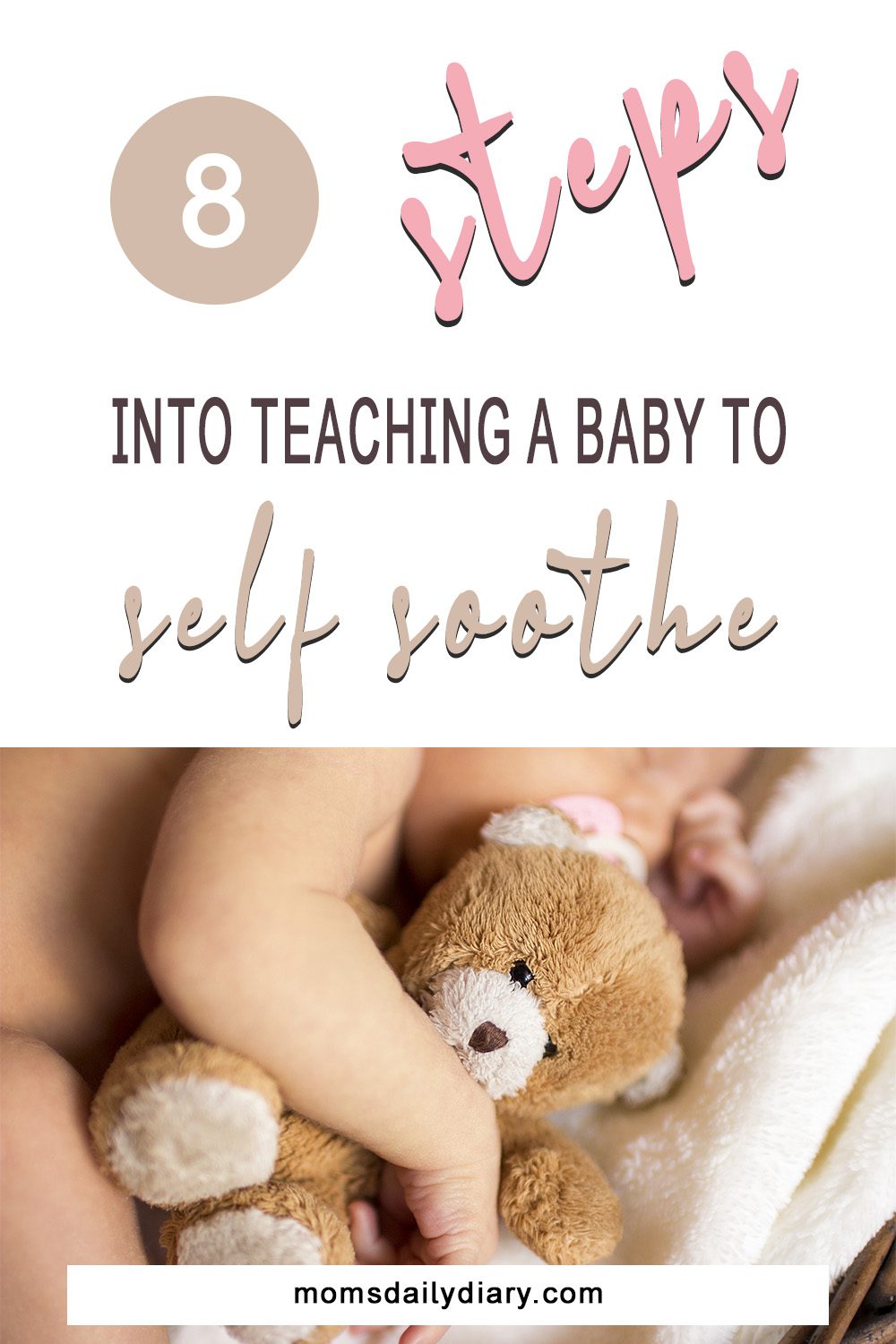
Some babies are natural self-soothers, while others may need to be taught how to do it. For some, the learning process could take only a few weeks, while it could mean a year of consistency for others.
So relax and start moving one step at a time without stressing out yourself or your baby.
Set your mind to it
Probably the hardest thing about teaching your little one to sleep on their own is that it feels like you’re letting them go. I know it felt so to me.
I used to co-sleep with both my kids until they were 1-month-old. After that, I put them in a crib attached to my bed. My younger one still sleeps there, while the older one is now in their room.
I still remember how heartbroken I felt the first few nights I left her in her room (after she was sound asleep). She, however, got used to her new environment a lot easier than I did.
After all, I just had to remind myself that I was doing this for her own good, and it all paid out in the end.
Create a good sleep environment
Now that you’re ready, creating a good, peaceful, and safe environment for your child is the first and most important step.
How to do it? Here are the basics:
- The room should be dark with a soft night lamp available in case you need to turn it on in the middle of the night. Blackout curtains or shades usually do the trick.
- The room should be cool but not cold. The ideal room temperature for a baby or child’s room is considered to be 20° to 22°C (or 68° to 72°F).
- Avoid leaving toys, blankets, or other loose objects around a younger baby, as it increases the risk of SIDS.
- Install a white noise machine. Preferably one that can be controlled remotely. This thing does miracles, believe me.
Set a bedtime routine
This is something you can apply a lot earlier, even with your newborn. But if you hadn’t done so by now, then it’s finally time to set and stick to a bedtime routine.
Predictability gives babies and young kids a sense of comfort and security. Doing their routine every evening allows them to unwind from the emotions from the day.
Here is what our evening routine looks like:
- 8:30 PM – bath time
- 8:45 PM – after-bath massage and getting into PJs
- 9:00 PM – turn on the mobile, dim the light; feeding
- 9:15 PM – rocking and lullaby singing/humming until she gets drowsy
- 9:30 PM – I put her in her crib and stay with her until she falls asleep, which usually takes 5 to 30 min.
I need to mention here that she is currently 2.5 months old. When she gets 4 months of age I’ll amend it to the routine that we used and worked with our older, i.e:
- 9:15 PM – put her in her crib drowsy and leave the room.
If she starts crying, I would wait a couple of minutes, go, caress her, and talk to her until she calms down. Then leave the room again.
At first, this whole going in and out of the room may be a bit annoying. Soon, however, they will learn that you’re there for them even if you’re not in the room and will stop calling you out so often.
For our older daughter, this took about 3-4 weeks.
Leave them drowsy but awake
I have mentioned this in the previous step but let me explain why this is so important.
Imagine falling asleep in the arms of your loved one. And then all of a sudden you wake up somewhere else, alone. Doesn’t sound nice, does it?
And for a baby, this is even more stressful.
Leaving them in the crib drowsy but still awake saves them this stressful moment. And as a bonus, eventually, they will start to associate the crib with bedtime, sleep, and security. A feeling that they are used to getting from your embrace only.
If your baby is used to getting asleep while you hold them or rock them they may start crying when you put them in the crib awake. So try to put them down a minute or two before they usually fall into a deep sleep. Then gradually increase the time until they are ready for you to leave them awake and ready for sleep.
This may take a while so be patient, don’t push them, and don’t give up.
Give them a soother
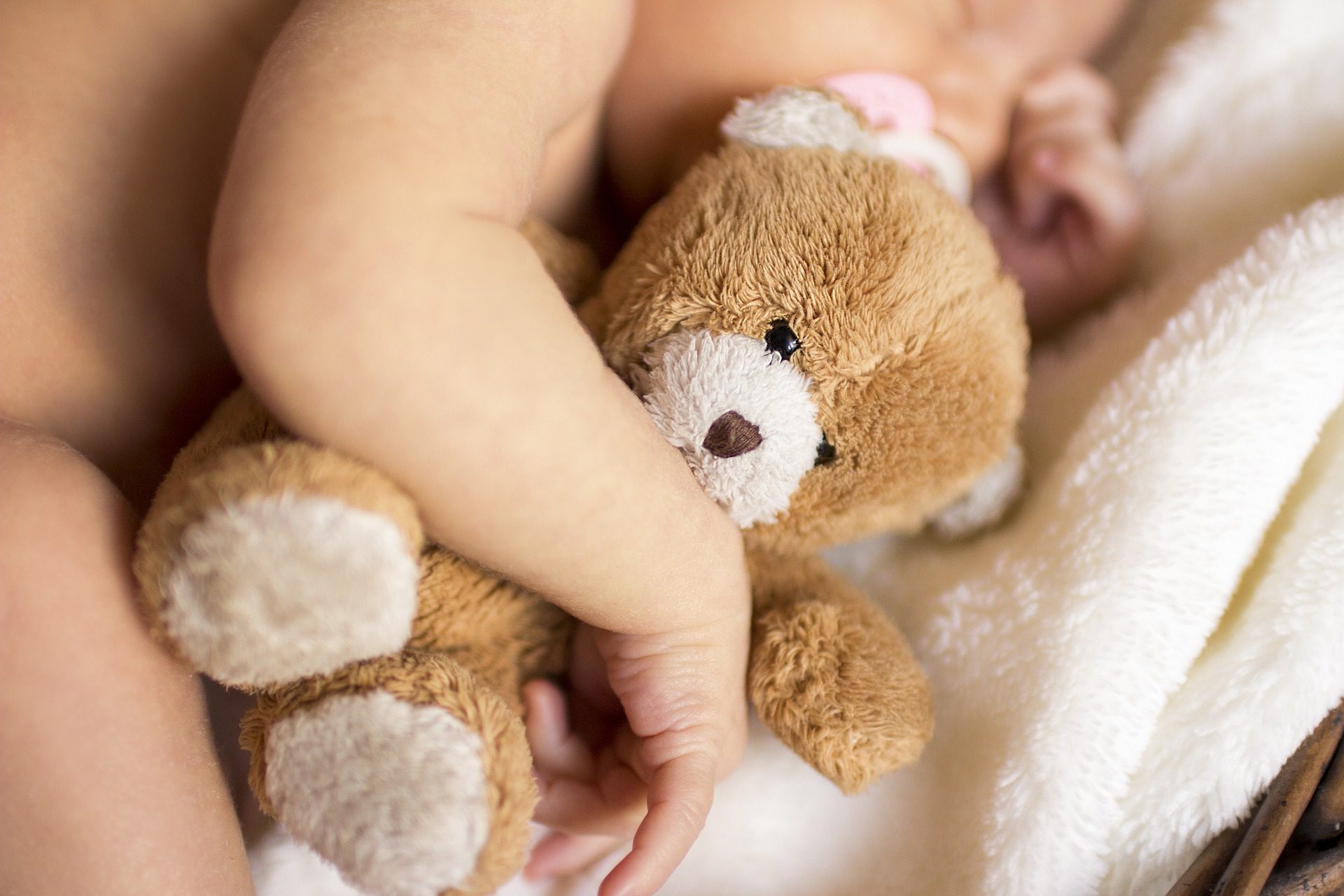
If your baby is old enough, you can offer them a soother that they can associate with going to bed. It could be a blanket, a stuffed animal, or anything cuddly that your baby likes to hug.
If they wake up in the middle of the night and you have to go to them, offer them the soother first before picking them up.
Offering them a pacifier is another option, however, it has a downside too. If your baby is used to going to sleep with their pacifier but cannot quickly find it in the dark, they will almost certainly call for you to give it back.
Make sure they get enough sleep
A 4 to 6-month-old baby needs about 14-15 hours of sleep with 10 hours of nighttime sleep and 4-5 hours during the day, divided into 2-3 naps.
I know it sounds counterintuitive, but if your baby doesn’t get enough sleep during the day, they won’t be able to sleep well at night either.
They will be too tired and irritated in the evening. So make sure you balance their awake time and nap time during the day.
Allow them to self-explore
It is natural for younger babies to want to explore their fingers, toes, hair, and face. What strikes me, is how many moms are frightened by this and hurry to take the fingers out of the baby’s mouth.
Let me tell you how this went with my older daughter.
She started sucking her thumb when she was about two months of age. At first, I panicked but a child physiotherapist we were seeing at the time told me not to stop her, that it was natural. So I let her.
She kept sucking her finger quite a bit for a few months, then only when she was getting sleepy, and finally, she stopped on her own a little after a year and a half. And yes, her teeth are perfectly aligned and there was absolutely no damage.
In essence, let babies explore themselves and don’t be so afraid of things that are completely natural.
Be consistent
Last but not least, you need to be consistent with your baby’s new routine.
Rome was not built in a day. Neither will your 4-month-old learn a new skill overnight.
Establishing a new skill takes time. At times it will be hard, too. But remember that you’re doing it for their own good. And yours too, for that matter.
As long as you’re patient, consistent, and loving, in the long run, it will all pay off.
The benefits of having a self-soothing baby
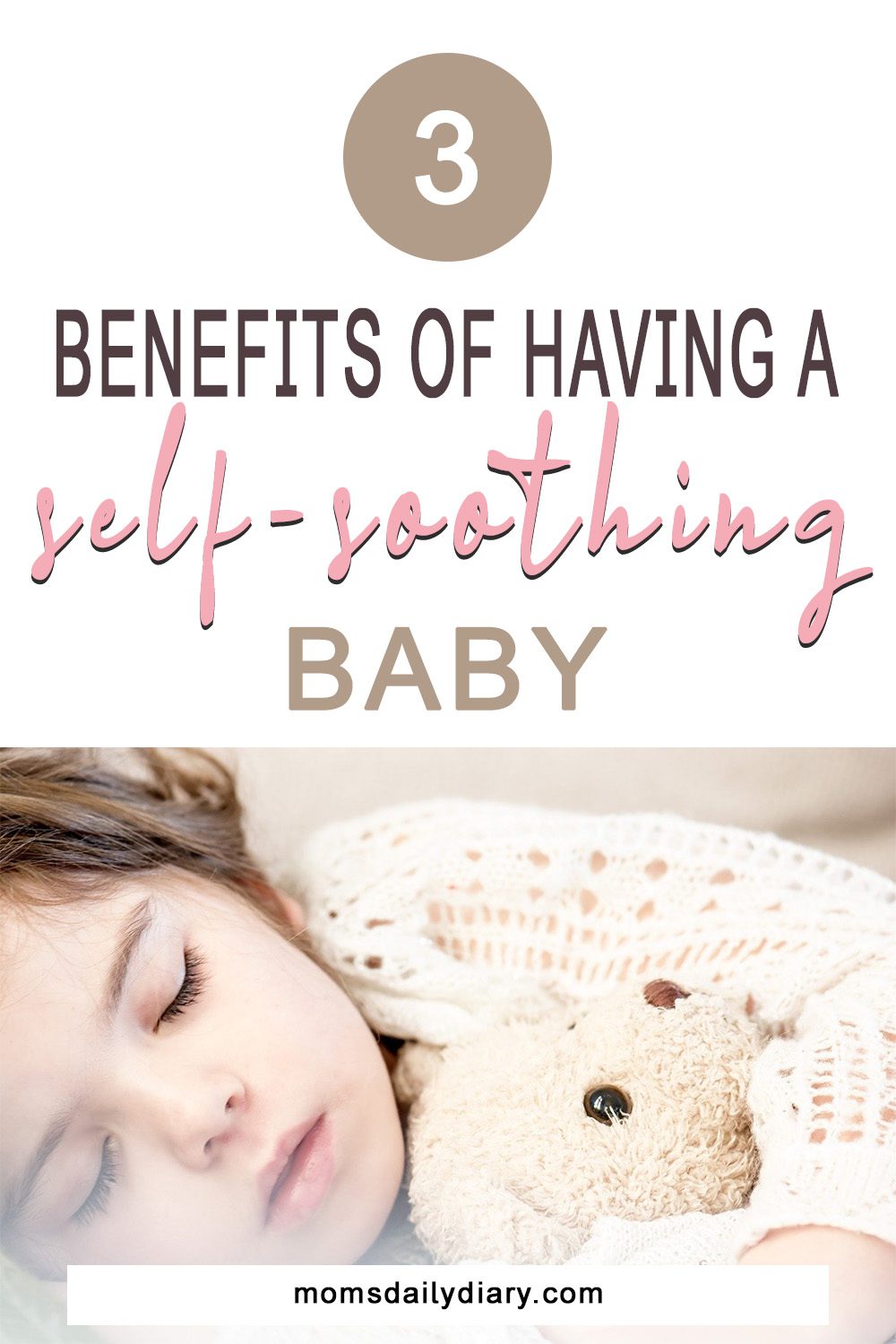
In the long run, there are plenty of benefits of self-soothing. And as long as you have chosen a gentle method of adapting them to the new skill, you’ll reap these benefits before you know it.
Forget about sleep deprivation
When the lack of sleep builds up, it puts you and your whole family under pressure. And it’s not uncommon to lose your nerves against someone who didn’t deserve it, just because you haven’t had a decent sleep in months.
Having a baby that sleeps through the night (and lets you sleep too), means that you’ll be a lot more well-rested in the morning.
Reduces fussiness in the baby
Just like you get cranky when you’ve had a sleepless night, babies and younger kids also tend to be fussier when they wake up tired.
In other words, a baby that can self soothe has better sleep at night without you having to intervene. And since they’re well-rested, with time, they also become calmer and less demanding during the day too.
Promotes independence and confidence
By learning to soothe themselves, babies also learn to control their emotions better. And being well-rested allows them to practice different new skills during the day, which also gives them confidence.
Don’t worry though, your little one will still need you as much as you need them. They may just try to handle the little things on their own before they call out to you.
Conclusion
So, now you know why and how to teach a baby to self soothe.
But whether you’re a supporter of the self-soothing theory or don’t really believe in it, applying a sleep routine in a gentle way can bring nothing but benefits to your whole family.
Be loving, be patient, be supportive, and the benefits will come regardless if you’re looking for them or not.

